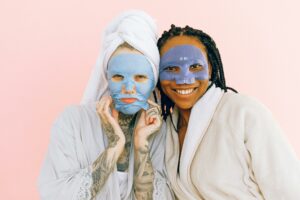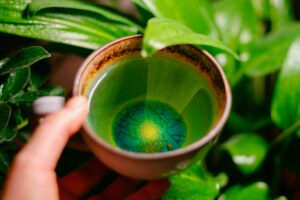Self-Care DIY Do’s and Don’ts

- Introduction
- The Importance of Self Care
- The Do’s And Don’ts of Self-Care
- The Do’s of Self-Care
- The Don’ts of Self-Care
- DIY Self-Care Ideas For Relaxation
- Have A Relaxing Bath
- Practice Meditation
- Yoga and Stretching
- Nature Walks
- Make A Cup of Tea And Read
- Skincare DIYs
- Honey And Oatmeal Mask
- Sugar And Moringa Oil Scrub
- Green Tea Toner
- Common DIY Self-Care Mistakes To Avoid
- Avoid using ingredients that irritate your skin
- Over-Exfoliating
- Don’t Use DIYs As A Substitute For Medical Treatments
- The Power of Aromatherapy In Self-Care
- Promoting Relaxation And Reducing Stress
- Enhances Mood And Well-Being
- Supports Physical Health
- Conclusion
Introduction
Self-care is a phrase that has become a buzzword in recent years and there’s a good reason for it. It involves looking after ourselves physically, mentally and emotionally and is crucial to maintaining one’s overall wellbeing. However life often gets busy, and expensive. This makes it difficult to prioritize self-care and this is where DIY self-care enters the picture.
DIY self-care refers to engaging in self-care activities or rituals that are carried out by oneself. Usually without the help of a profession or external party. Self-care is a proactive approach that can be practiced from the comfort of your own home. From homemade facemasks to aromatherapy techniques, there are a variety of easy DIY self-care options at your fingertips. However, you should always approach DIY self-care with caution. There are many common mistakes that can be made which can have potentially-negative consequences for your mental and physical health.
The Importance of DIY Self Care

The importance of self-care.
Self-care is often stigmatized as being self-indulgent or shallow. However, the truth is that it can be important to your health and wellbeing. Taking the time to care for yourself can help reduce stress, boost self-esteem and improve the overall quality of your life. It is particularly important for those who work in highly stressful environments to place an emphasis on self-care. It has many benefits, and for people who live a face-paced lifestyle, it can help to prevent burnout. Additionally, self-care promotes better sleep, increases energy and improves focus and productivity.
Prioritizing self-care is not only helpful for you; it can also help the people who are within your immediate environment. You are better equipped to care for your loved ones when you look after yourself. It also means you have the energy to be fully present within these relationships. Incorporating self-care into your routine doesn’t have to be time-consuming or expensive. It should be simple habits such as going for a walk, or taking a long bubble bath.
The Do’s And Don’ts of DIY Self-Care

The do’s and don’ts of self-care.
It’s very easy to fall into the trap of thinking that self-care should be about spending loads of money and indulging in healthy habits. The truth is that self-care should be simple and affordable. Here are a few do’s and don’ts that we recommend trying to follow when incorporating self-care into your lifestyle.
The Do’s of DIY Self-Care
You should be sure to set aside time for regular self-care activities such as reading, meditation and exercising. Try practicing mindfulness and self-reflection to determine the self-care activities that work for you. Choose self-care activities that align with your hobbies and interests. For example: if you enjoy nature and the outdoors perhaps you could take up hiking as a self-care activity.
Create a peaceful and relaxing environment when you are focusing on self-care. These can be simple things such as lighting a scented candle while you relax in a warm bubble bath, or playing some soothing music while you meditate. Apply self-care to your life holistically. This is why you should include regular exercises and maintain a healthy, balanced diet.
When you are busy or stressed, this is when you should be prioritizing self-care the most. If you need support from friends and loved ones, don’t be ashamed to ask for it.
The Don’ts of DIY Self-Care

Self-care is not an excuse for unhealthy habits.
You shouldn’t use self-care as an excuse to indulge in unhealthy habits such as binge eating and drinking alcohol excessively. It’s important not to feel guilty for taking time for yourself. Self-care should relieve stress and not increase it, therefore you shouldn’t feel pressure to follow any trends or rules in the self-care industry.
If you struggle with mental health issues and self-care alone is not enough, you should seek help from a medical professional. Don’t push yourself too hard when it comes to self-care, listen to your body and stop when needed. You shouldn’t neglect sleep, healthy eating and exercise for trendier self-care practices.
DIY Self-Care Ideas For Relaxation
When it comes to DIY self-care, it’s important to note that what works for one person may not work for another. DIY self-care should be tailored to fit a person’s specific needs. This takes on many different forms, depending on the individual’s unique circumstances. The following are some general practices for DIY self-care, if you relate to any of these on a personal level we highly recommend adding them to your routine!
Having A Relaxing Bath

Having a relaxing bath is self-care.
Take a warm bath with Epsom salts, and try adding a few drops of your favorite essential oil scent to enhance the relaxation of the experience. Epsom salts will help relax your muscles and reduce stress, while essential oils like Lavender, Chamomile or Vanilla can help calm your mind.
Practicing Meditation
Deep breathing can help you slow and down and calm your nervous system, while meditation can help you focus your attention and reduce anxiety. Meditation is something that you can practice for a short amount of time on a daily basis, and it has an extremely calming effect on the mind. For an enhanced meditation experience, you should consider diffusing essential oils during your meditation sessions. Aromatherapy is the diffusion of essential oils such as Lavender and Chamomile, which can promote a calmer mind and enhance relaxation.
Yoga and Stretching

Yoga and stretching is considered to be self-care.
Practicing yoga not only increases your flexibility and is a form of exercise, but it can also help you become more aware of your thoughts and emotions, which can help you better manage stress in your daily life. It also helps relieve tension in your muscles and helps with your overall posture.
Walking In Nature
Spending time in nature can help you feel more grounded and connected to your environment. The fresh air and sunshine is also a great way to improve your mood. It also has the added benefit of getting exercise which is good for your heart health, muscle tone and weight management.
Making A Cup of Tea And Reading
Reading a book is a powerful way for you to relax and forget about your worries. Stories have the ability to transport us to different worlds and places in our heads. When combined with drinking a warm cup of tea, it can be an extremely relaxing experience. Teas like chamomile have a calming effect on the mind and aid in deeper relaxation.
Skincare Self-Care DIYs
When adding any skincare into your DIY self-care, you should always avoid potentially-harmful ingredients and opt for products that contain natural ingredients. Skincare DIYs are a popular way to take care of your skin using natural and readily available ingredients. Here are a few popular DIY treatments you can try at home:
Honey And Oatmeal Mask

DIY masks for self-care.
Mix equal parts honey and finely ground oatmeal to create a mixture that should feel like a paste. Apply it to your face and leave it on for 15-20 minutes before rinsing with warm water. This natural DIY skincare mask is great for soothing and moisturizing the skin. A study written in the Journal of Wound Care found that honey can help to promote wound healing and reduce the risk of infection. Additionally, honey has been shown to help retain moisture in the skin and it contains anti-inflammatory properties. However, it may be wise to use 100% pure honey which has no additives or fillers.
Sugar And Moringa Oil Scrub
Mix ½ cup of sugar with ¼ cup of moringa oil to create your scrub mixture. Studies have shown that moringa oil is rich in antioxidants and vitamin E which helps protect skin from environmental factors and that it can also prevent premature aging. When using sugar in a DIY scrub, it’s best to use a fine-grain sugar such as granulated sugar or brown sugar. These types of sugar are gentle on the skin. Apply the mixture to your face and body and gently massage in a circular motion for a few minutes before rinsing with warm water. This DIY scrub is great for exfoliating and smoothing the skin. It’s also cheap and easy to make!
Green Tea Toner

Green tea toner for self-care.
Brew a cup of green tea and let it cool down for a while. Use a cotton pad to apply the tea to your face as a toner. This is an extremely simple, yet effective, DIY toner. Green tea reduces inflammation and improves the appearance of your skin. Research shows that green tea contains polyphenols and catechins, which are antioxidants that can help protect the skin from sun damage, reduce the appearance of fine lines and improve skin elasticity.
Common DIY Self-Care Mistakes To Avoid
While at-home DIY skincare can be a fun and cost-effective way for you to care for your skin, there are many potential mistakes that can be made along the way. Here are our favorite tips to keep in mind when it comes to DIY recipes:
Avoid using ingredients that irritate your skin
Some DIY recipes may include ingredients that can be harsh on your skin which can cause inflammation and irritation. For example, lemon juice may be too acidic for some people while baking soda can be too alkaline. You should research any ingredients you intend to use and always perform a small patch test to see how your skin reacts.
Over-Exfoliating
Over-exfoliating leads to irritation and skin sensitivity in the affected area. You should always use any type of exfoliant in moderation, even if they are natural DIY exfoliants. Be sure to choose the right type of exfoliant for your skin as well. For example, people with sensitive skin should avoid using scrubs. They should instead opt for more chemical exfoliants such as alpha hydroxy acids (AHAs) and beta hydroxy acids (BHAs).
Don’t Use DIYs As A Substitute For Medical Treatments
While some DIYs can be helpful for improving the appearance of your skin, they should definitely not be considered as a substitute for medical treatments. If you have a skin condition or a chronic issue, it’s important to consult with a dermatologist before trying any DIY treatments.
The Power of Aromatherapy In DIY Self-Care

Aromatherapy and DIY self-care.
Aromatherapy is the use of essential oils and the sense of smell to enhance well-being, aid in relaxation and promote positive moods. It can be an effective tool when it’s used as part of a self-care routine, because it supports emotional and physical health. It holds many benefits when properly incorporated into your routine.
Promoting Relaxation And Reducing Stress
Many essential oils have a calming and soothing effect on the mind and body, making them a great choice for promoting relaxation and reducing stress. There is research that shows that inhaling lavender causes the body to lower its cortisol levels, a hormone that is associated with stress.
Enhances Mood And Well-Being
There are certain essential oils that have shown to have a positive effect on mood and emotional well-being. For example, lavender oil is known for its calming properties, while citrus essential oils like orange and lemon can be uplifting and energizing.
Supports Physical Health
Some essential oils contain antiseptic, anti-inflammatory, and analgesic properties, which can help support physical health. An example of this is tea tree oil, which is often used for its antiseptic properties, while peppermint oil is known for containing anti-inflammatory properties.
Conclusion
DIY self-care can be a powerful tool to take care of your physical, mental and emotional wellbeing. However, it’s important to proceed with caution and awareness of the potential risks and pitfalls. By following the do’s and don’ts outlined in this article, you can ensure your self-care practices are safe and effective. Remember to listen to your body, seek guidance from medical professionals when necessary and prioritize your own health and wellbeing. With a little bit of effort and mindfulness, you can create a self-care routine that helps you feel your best and live your fullest life!


